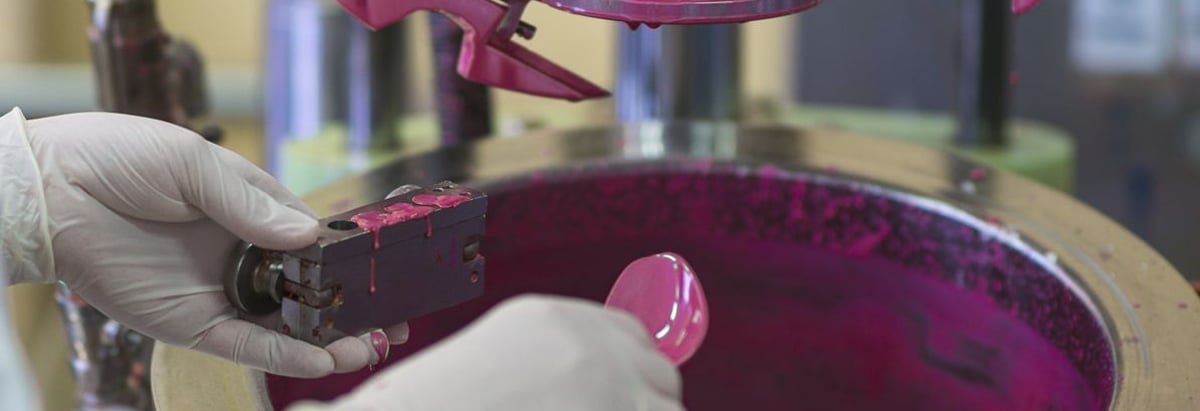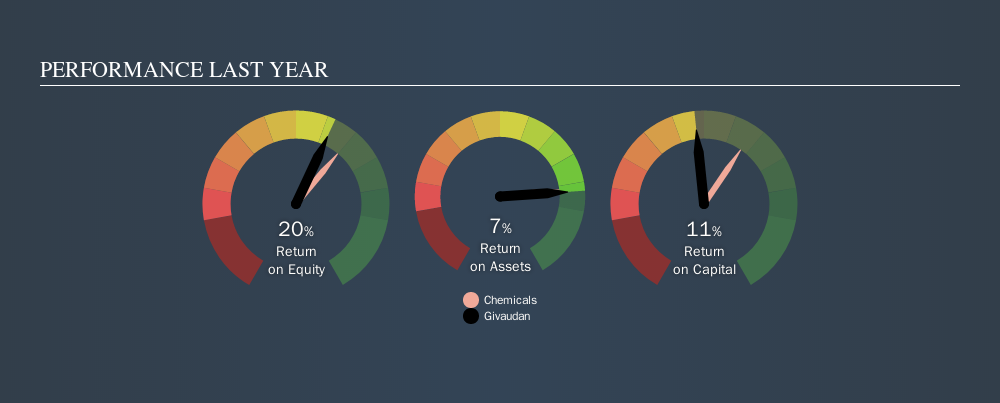
Today we'll evaluate Givaudan SA (VTX:GIVN) to determine whether it could have potential as an investment idea. Specifically, we're going to calculate its Return On Capital Employed (ROCE), in the hopes of getting some insight into the business.
Firstly, we'll go over how we calculate ROCE. Next, we'll compare it to others in its industry. Finally, we'll look at how its current liabilities affect its ROCE.
Understanding Return On Capital Employed (ROCE)
ROCE is a measure of a company's yearly pre-tax profit (its return), relative to the capital employed in the business. All else being equal, a better business will have a higher ROCE. Overall, it is a valuable metric that has its flaws. Author Edwin Whiting says to be careful when comparing the ROCE of different businesses, since 'No two businesses are exactly alike.'
How Do You Calculate Return On Capital Employed?
Analysts use this formula to calculate return on capital employed:
Return on Capital Employed = Earnings Before Interest and Tax (EBIT) ÷ (Total Assets - Current Liabilities)
Or for Givaudan:
0.11 = CHF867m ÷ (CHF9.8b - CHF2.1b) (Based on the trailing twelve months to June 2019.)
So, Givaudan has an ROCE of 11%.
View our latest analysis for Givaudan
Does Givaudan Have A Good ROCE?
One way to assess ROCE is to compare similar companies. Using our data, Givaudan's ROCE appears to be around the 12% average of the Chemicals industry. Independently of how Givaudan compares to its industry, its ROCE in absolute terms appears decent, and the company may be worthy of closer investigation.
Givaudan's current ROCE of 11% is lower than 3 years ago, when the company reported a 16% ROCE. This makes us wonder if the business is facing new challenges.

When considering this metric, keep in mind that it is backwards looking, and not necessarily predictive. Companies in cyclical industries can be difficult to understand using ROCE, as returns typically look high during boom times, and low during busts. This is because ROCE only looks at one year, instead of considering returns across a whole cycle. Future performance is what matters, and you can see analyst predictions in our free report on analyst forecasts for the company.
Givaudan's Current Liabilities And Their Impact On Its ROCE
Short term (or current) liabilities, are things like supplier invoices, overdrafts, or tax bills that need to be paid within 12 months. The ROCE equation subtracts current liabilities from capital employed, so a company with a lot of current liabilities appears to have less capital employed, and a higher ROCE than otherwise. To counteract this, we check if a company has high current liabilities, relative to its total assets.
Givaudan has total assets of CHF9.8b and current liabilities of CHF2.1b. Therefore its current liabilities are equivalent to approximately 21% of its total assets. A fairly low level of current liabilities is not influencing the ROCE too much.
What We Can Learn From Givaudan's ROCE
Overall, Givaudan has a decent ROCE and could be worthy of further research. Givaudan looks strong on this analysis, but there are plenty of other companies that could be a good opportunity . Here is a free list of companies growing earnings rapidly.
I will like Givaudan better if I see some big insider buys. While we wait, check out this free list of growing companies with considerable, recent, insider buying.
We aim to bring you long-term focused research analysis driven by fundamental data. Note that our analysis may not factor in the latest price-sensitive company announcements or qualitative material.
If you spot an error that warrants correction, please contact the editor at editorial-team@simplywallst.com. This article by Simply Wall St is general in nature. It does not constitute a recommendation to buy or sell any stock, and does not take account of your objectives, or your financial situation. Simply Wall St has no position in the stocks mentioned. Thank you for reading.
About SWX:GIVN
Givaudan
Manufactures, supplies, and sells fragrance, beauty, taste, and wellbeing products to the consumer goods industry.
Outstanding track record with adequate balance sheet and pays a dividend.
Similar Companies
Market Insights
Community Narratives





